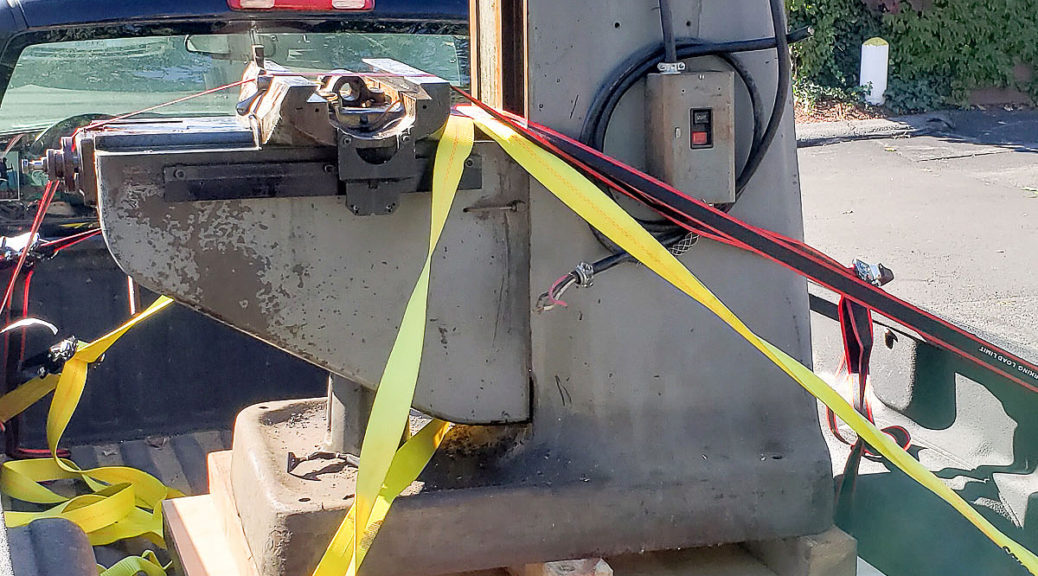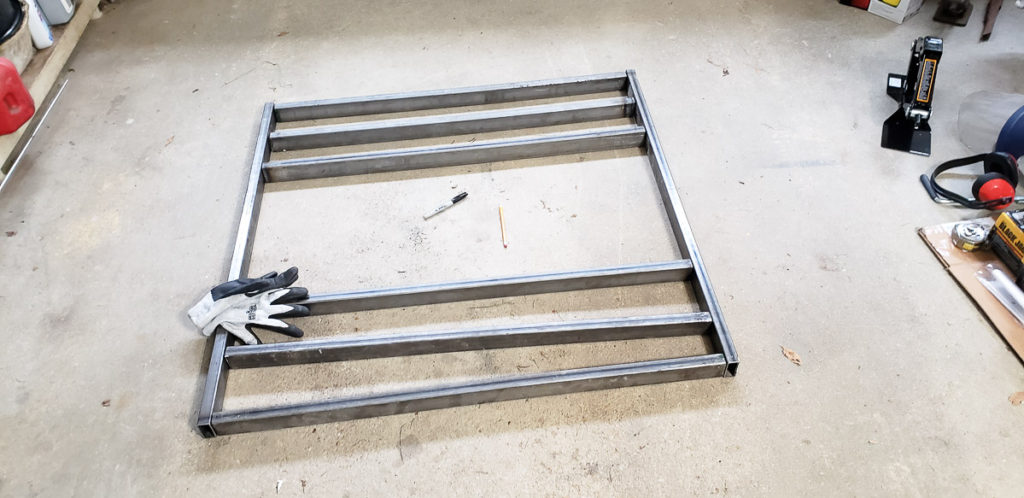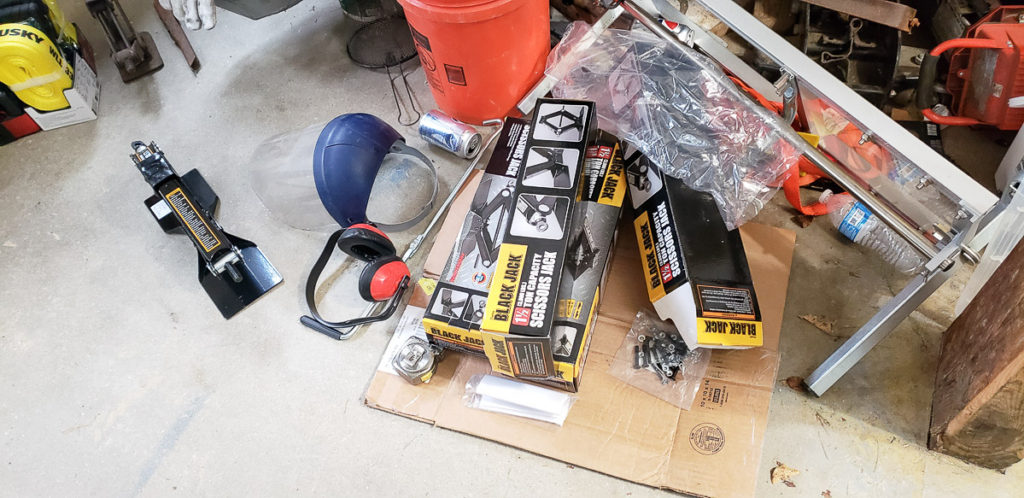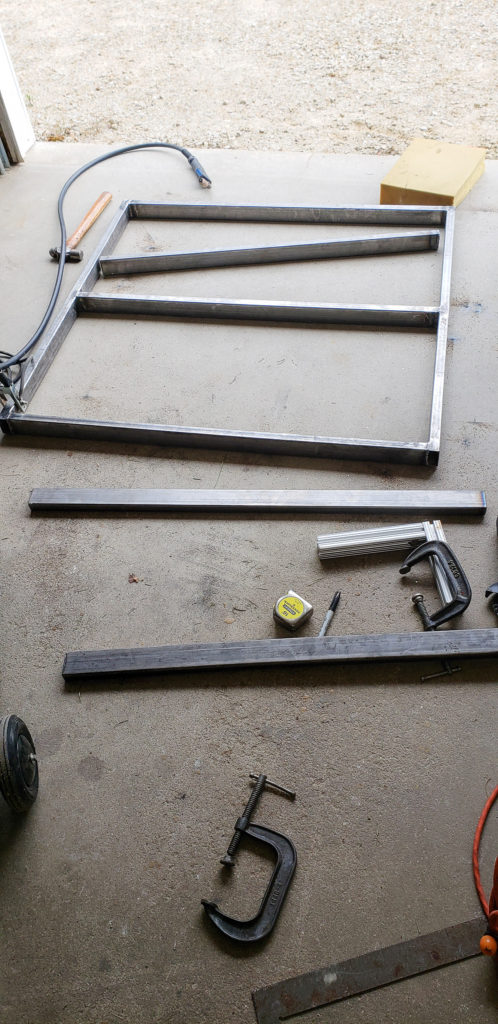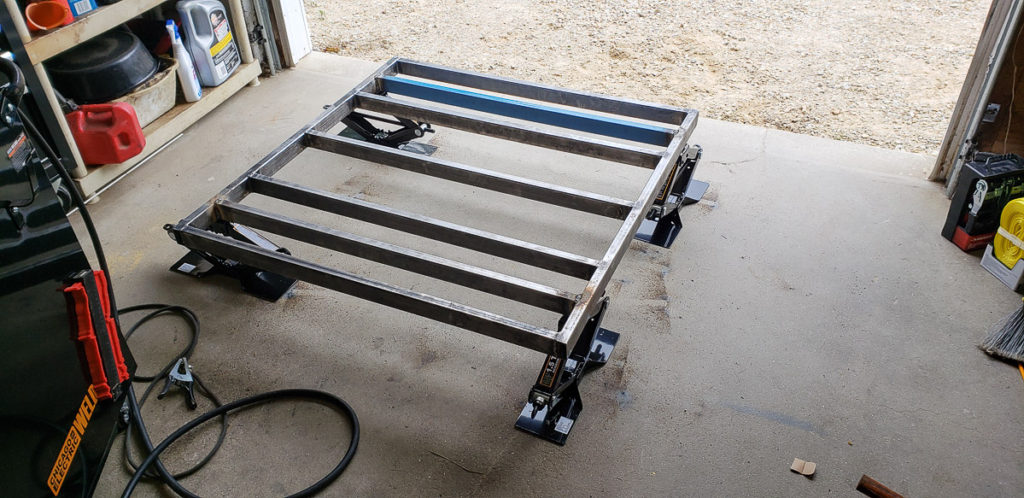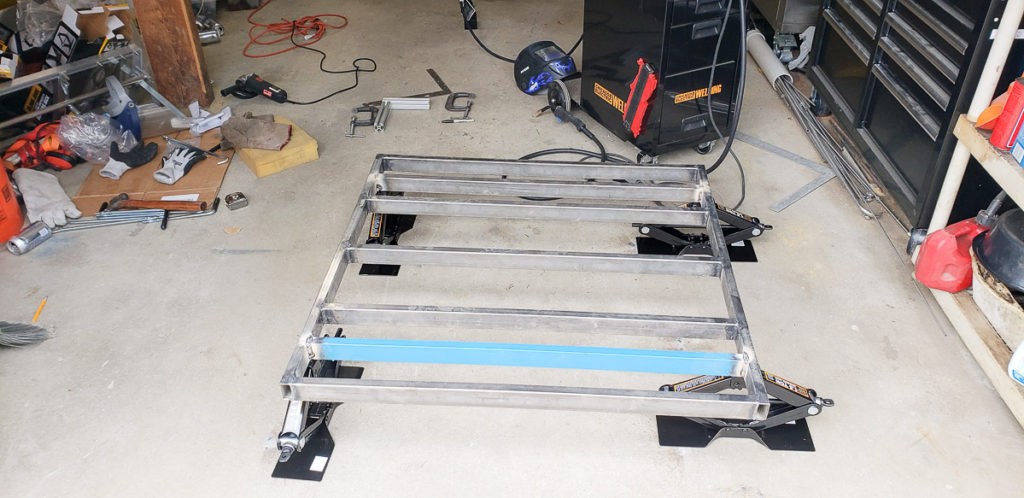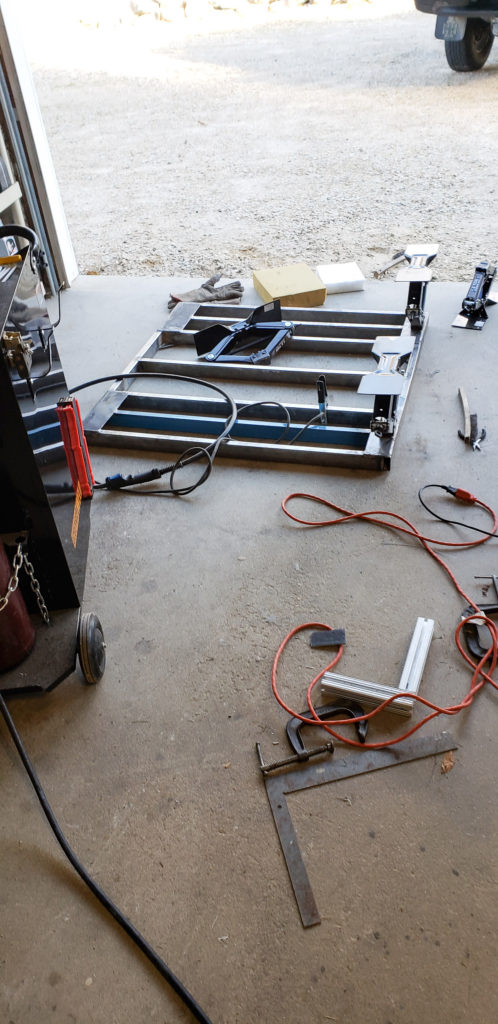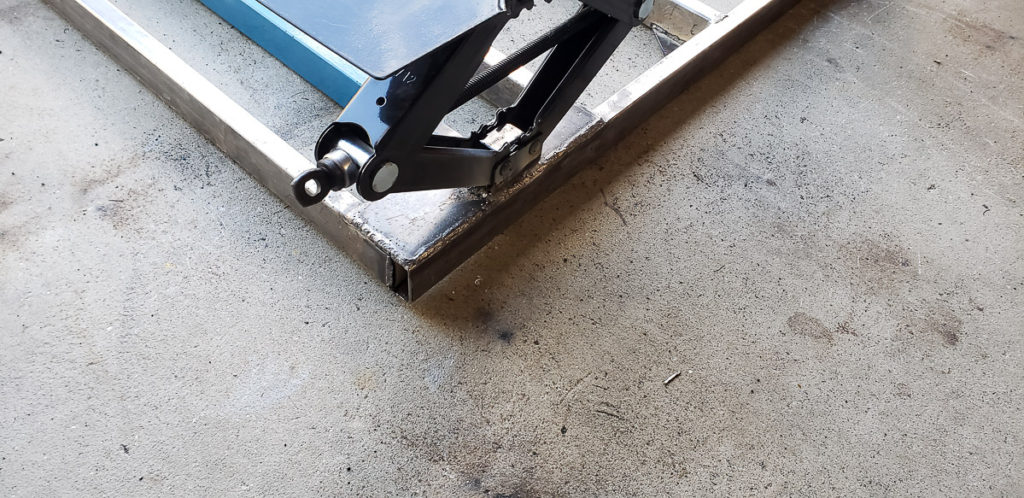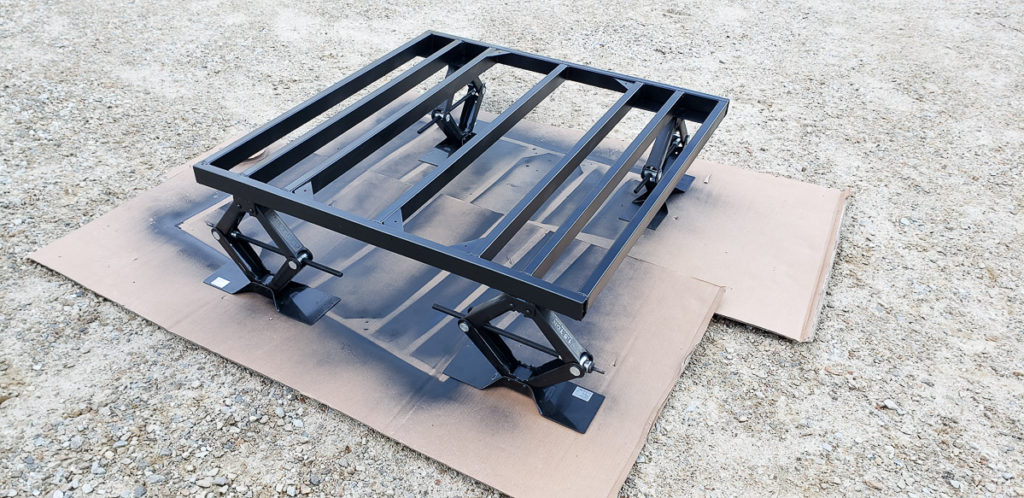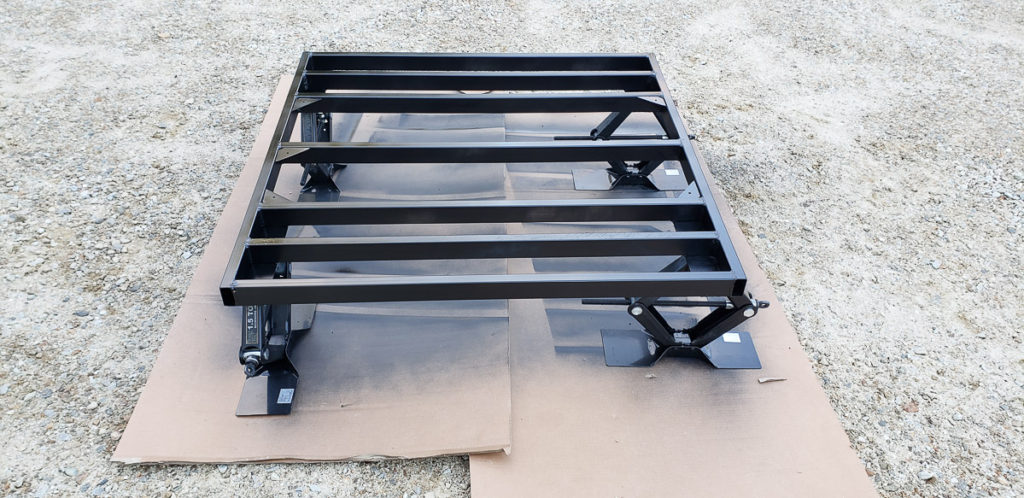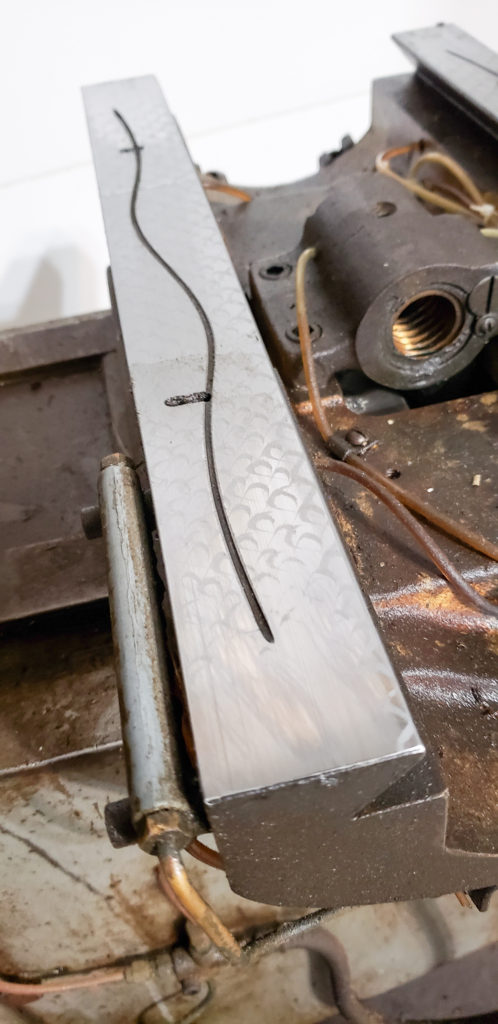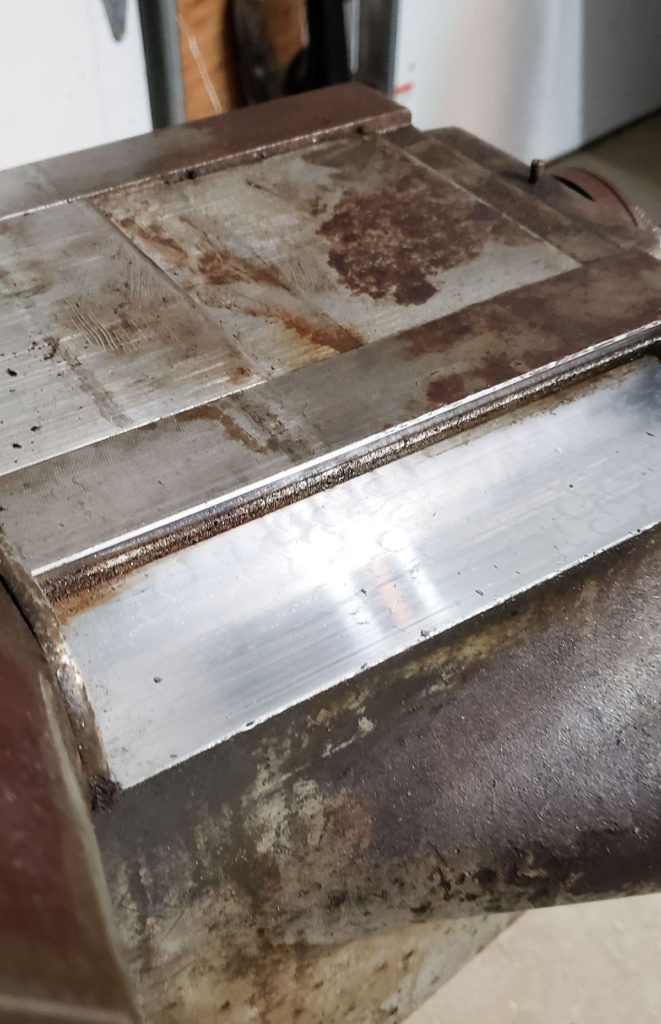At my day job, we have a Free or For Sale Slack channel. I visit this channel whenever there are new posts, but try hard not to claim anything I don’t absolutely need as I have enough junk. One day I saw a post by my friend and colleague of four years Scott where he was listing some machines including a craftsman lathe, a giant band saw, a huge 3 phase dust collector, and a Bridgeport Series 1 Milling Machine. I ignored his post the first time, but when he reposted a few days later, I asked Scott for more information. I have always wanted a Bridgeport, I told him I might be interested in giving his machine a good home if the price was right. Well he came back with the photo below and said, “the price is FREE!”. That’s my favorite price, but as my old mentor Donald Sundberg used to say often, There is no such thing as a Free Lunch.” So I asked, “What’s the catch?”
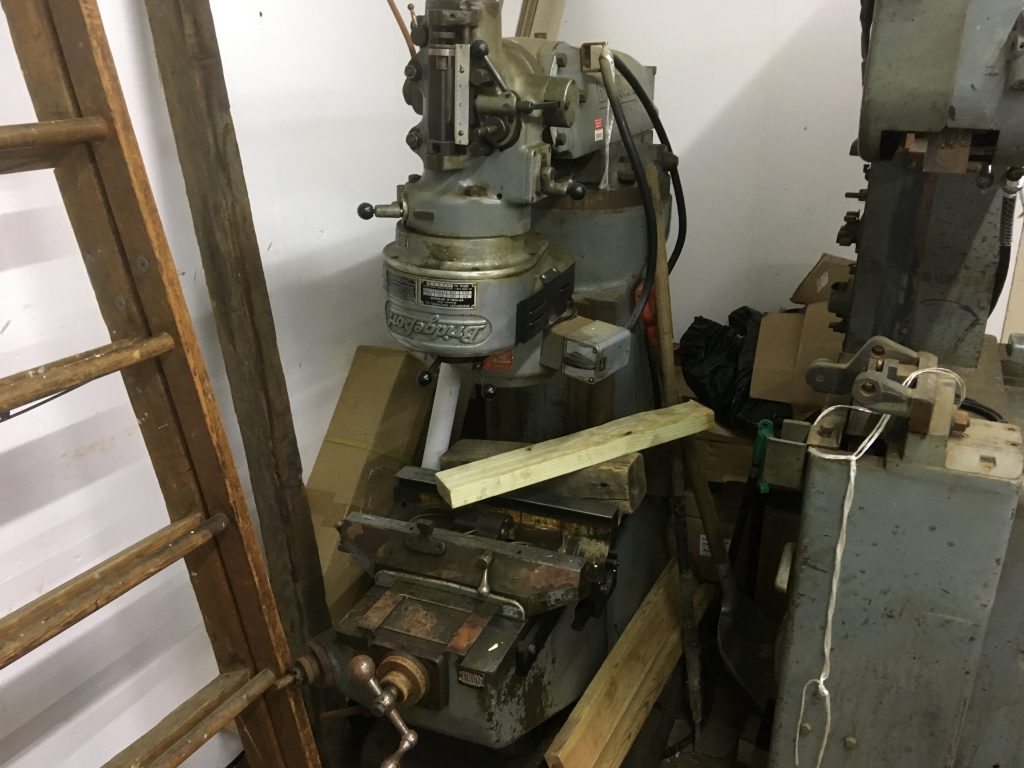
Many years ago Scott lived with a bunch of friends in an industrial space and they had a full shop they had put together. Apparently they had stored all of their large tools at Industrial Labs in Cambridge when they left this maker space home. This corner of the loading doc area at Industry Labs, is where the Bridgeport Mill sat for many years until I rescued it. I bet you are thinking, “gee that looks rusty…” right? I thought the same. I was willing to go look at it in person to see how bad the damage was to see if was possible to save this piece of old iron. Turns out, it was not that rusty at all. Rather it was coated with reddish wood sawdust on top of a hefty coat of way oil or grease they slathered over all of the surfaces. Which isn’t to say the machine was pristine or like new underneath, but it was a very restorable specimen. The years of shop dust, oil, varnished cutting fluid, and who knows what else had protected the metal underneath reasonably well. That and the hard chromed ways had me confident it would become a valuable addition to my home shop.
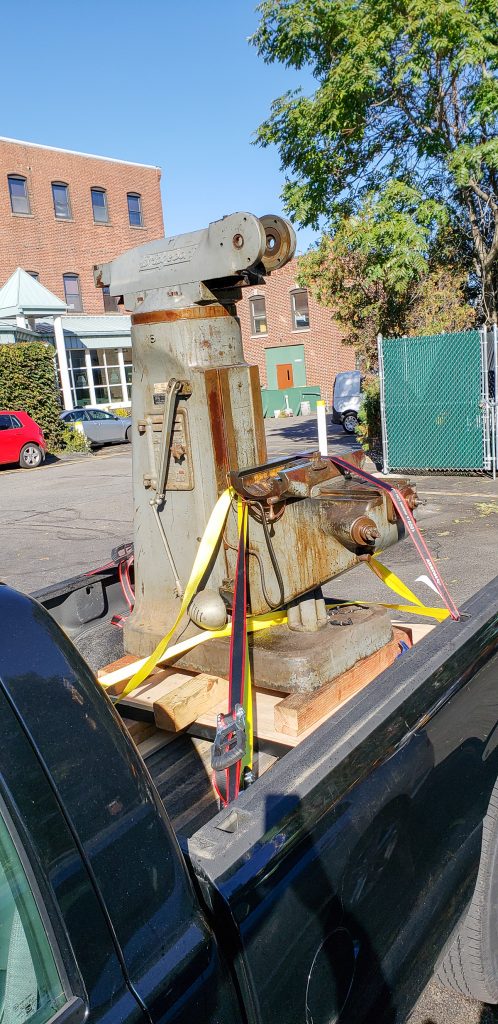
I wish I had taken more photos of the move itself, the reason the mill was free was because of the challenges of moving it. Apparently they had talked to Riggers, the cost was $3-5K. The loading dock was an old wooden terrible shape construction, the parking lot to it was on a hill, and there was ZERO possibility to get a rented dock height truck in to retrieve it. The loading doc was also damn tall at something like 46″ off the ground. I needed a way to wheel the mill from the dock onto my truck. Enter the first major challenge of this project, I needed a lift platform in the bed of my pickup truck. I did some math, made a few sketches, and stopped at Cohen Steel on the way home and bought the steel tubing needed to build one. I had a very short time to rescue the mill before Industry Labs was going to send it to the scrap yard for recycling.
After building the lift platform (construction photos above) with four scissor jacks welded for vertical adjustments I was committed to getting this machine home. I outlined a plan, and enlisted two friends Mike and Max from work to go over at 9am in the morning and help me load the machine. We were in a hurry, and sadly I didn’t take any pictures of the moving process itself. I wanted to remove weight from the top end, so I pulled the motor, the drive assembly, the head, and the head adapter. The table was previously removed and in storage along with some of the finicky bits, the DRO system, and some tooling. I would meet up with Alex to retrieve these parts later on. With the top end parts removed, We lifted it off the 4×4 wooden blocks with a pallet jack and with a hefty doc plate wheeled it into the blocked truck onto the platform I built adjusted to be perfectly level with the loading dock. I didn’t want the suspension to compress so I supported the frame with additional jacks.
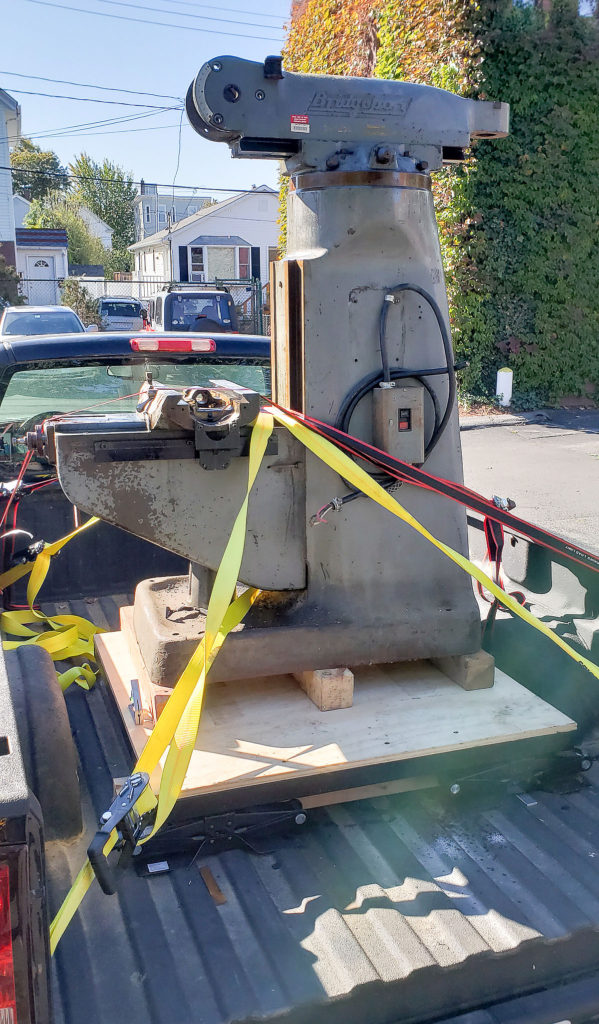
The loading onto the truck went surprisingly well, with the only issue being the truck was on a hill, even though I had driven the front tires up on boards to try and level it we had a minor scare. As the pallet jack rolled onto the lift platform it wanted to accelerate and keep rolling on it’s own. We managed to muscle it in place and drop it over the center line of the axle safely without incident. On the other end, unloading would go much more smoothly, as I planned to use the forks on the front end loader to just pick it up out of the truck.
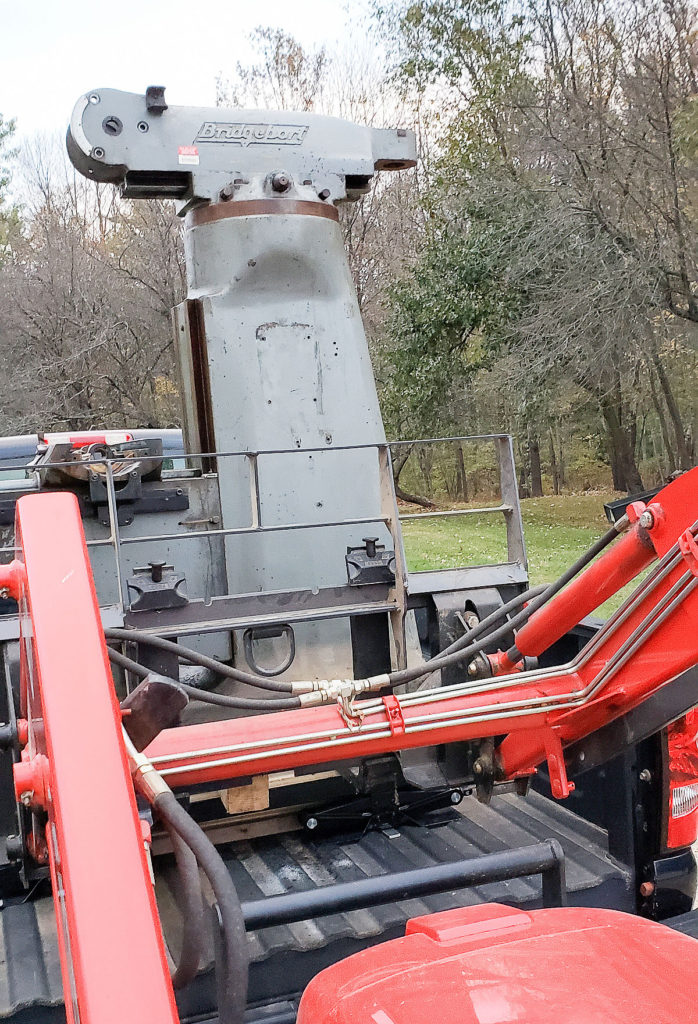
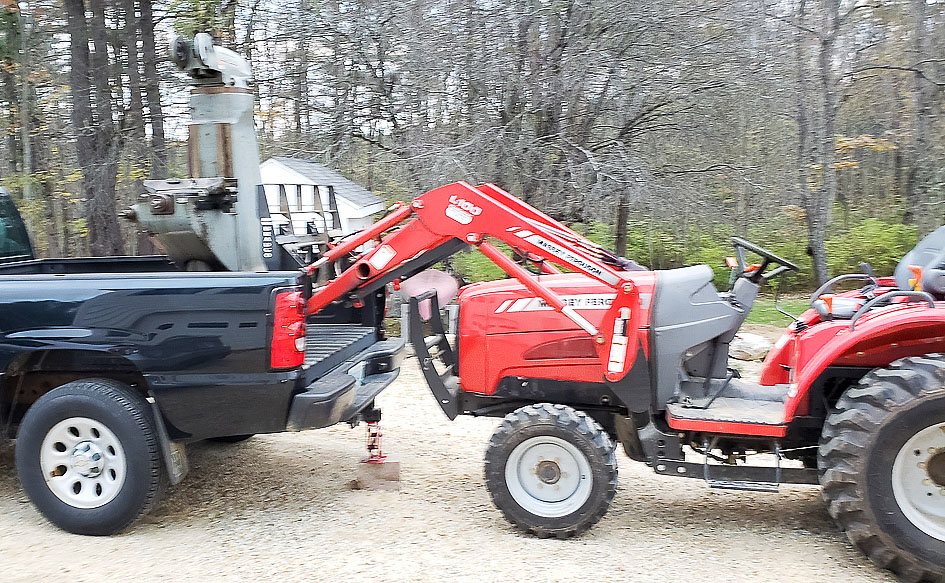
With the mill unloaded I left it just inside the Garage door. My car slept outside for a week, while I figured out where the Bridgeport would live permanently.
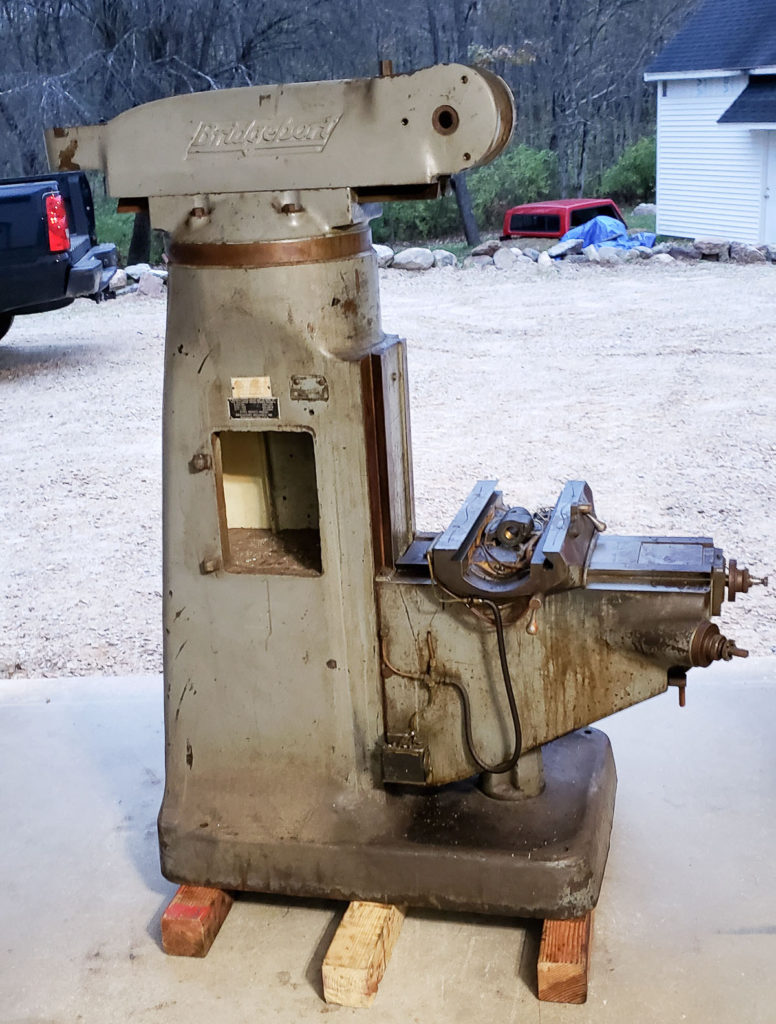
The only thing I did on the first evening owning the mill home was to spray some WD40 onto a rag and wipe down a few spots. The dusty goo on the mill was resilient but did come off with a bit of elbow grease and a lot of WD40 to reveal the nice shiny surfaces you can see in the photos below. I was happy I wasn’t wrong about the condition of the ways.
I’m going to close this first part of my Bridgeport restoration posts with these last words of wisdom. Taking a large machine like this mill home yourself is feasible, but only if you have the experience and equipment to do it SAFELY. The most important thing when moving large equipment is safety. If you aren’t 100% certain you can move it safely, hire someone to do it for you. In my day job, I am a mixed bag industrial engineer and research scientist. I have lots of experience and have moved equipment as large as 16 tons successfully without incident. It’s very easy to lose a life or limb when moving big machinery, and nothing is worth that sort of accident.
